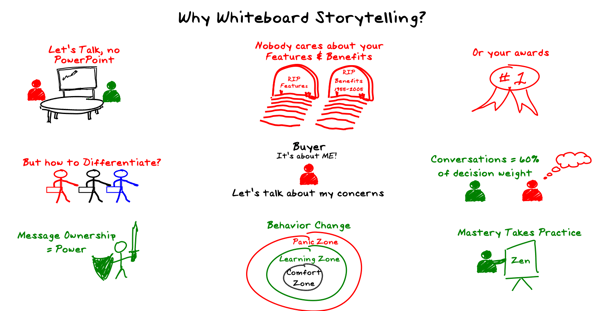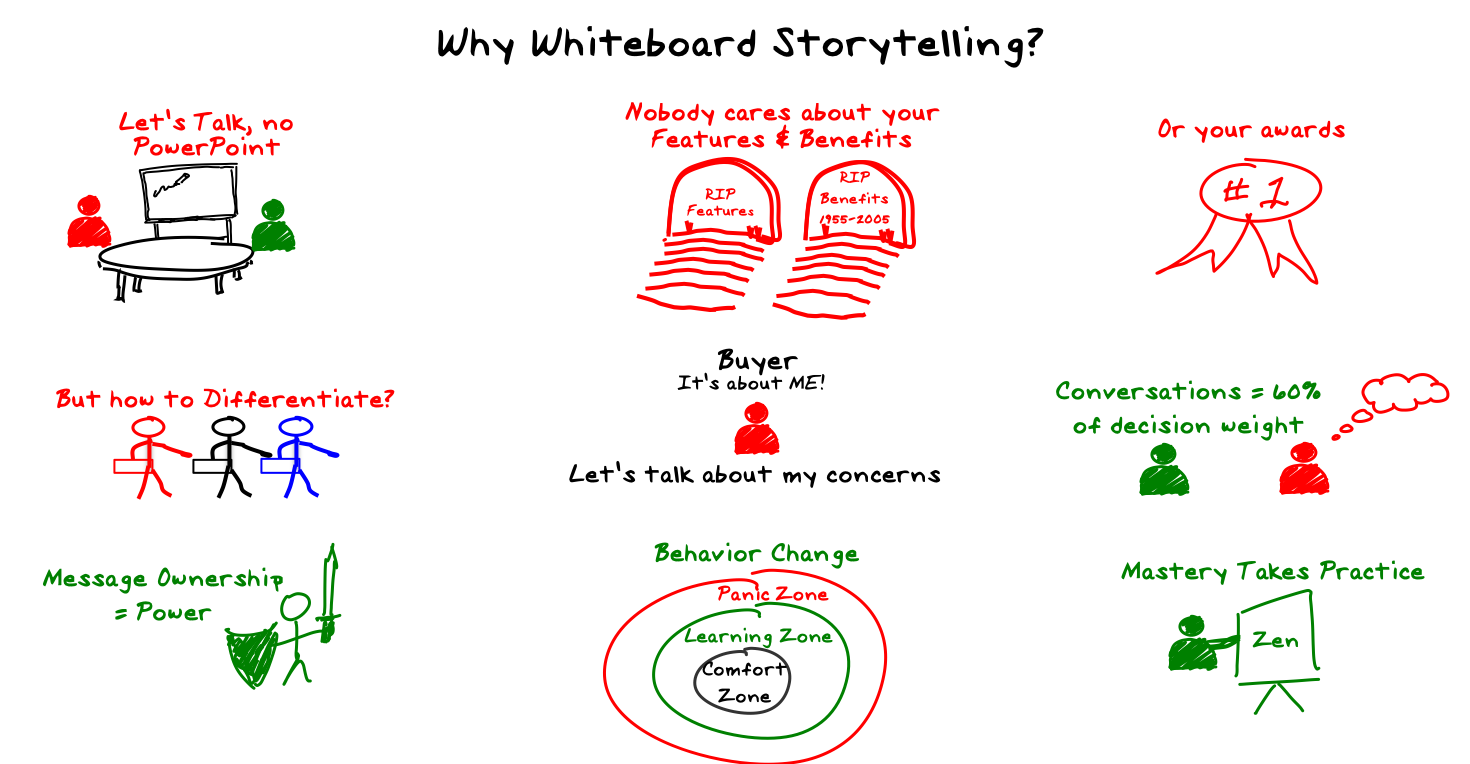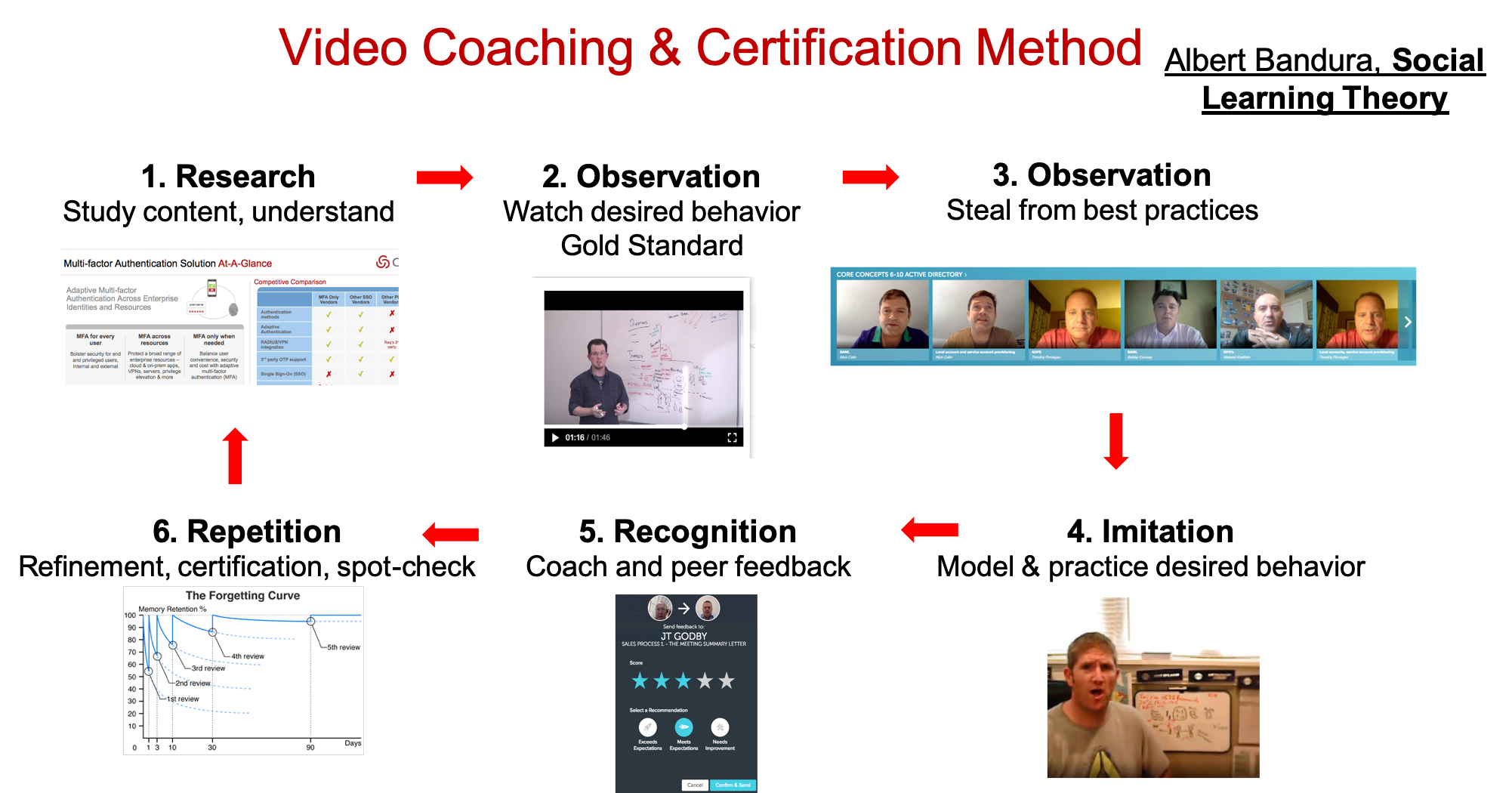Microsoft PowerPoint has been installed a billion times on Mac and Windows systems since launching in 1990. With an estimated 95% market share of the presentation market and more than 500 million users, Microsoft PowerPoint is a behemoth in the market and their collective competitors, mere minnows.
A Monopoly on Presentations
With around 30 million MS PowerPoint presentations created per day and $100M in annual sales at 85% gross margin, PowerPoint is a phenomenal success story and the standard for delivery of presentations worldwide. The problem with monopolies is that there is little to no incentive to innovate. This is evidenced in PowerPoint, as release after release offers very minor incremental features, vs an expansion and re-imagining of the visual engagement metaphor.

PowerPoint’s failings as a medium for sales presentations have already been well-established. When used in today’s standard sales presentation, Power Point:
- Inhibits engagement and audience rapport,
- Muddles the transfer of information, and
- Diminishes salesperson effectiveness.
It’s easy to imagine the mechanisms by which PowerPoint inhibits audience engagement – simply think back to the last time you sat through a text-heavy, read-directly-from-the-screen slideshow-style PowerPoint presentation. Basically, when you put all of your relevant information onto slides that can be easily read in advance by your audience members, you eliminate the incentive for them to follow along and actually engage with the information you’re sharing...in fact why bother showing up...you can send it advance, they can read it without you and they can call you if they need you.
A major shortcoming of PowerPoint is that it is presenter oriented, not audience oriented and not content oriented. While the salesperson is itching to give their presentation, the audience is quietly dreading "not another boring PowerPoint sales presentation" I can hear the howl of PowerPoint fans now, "it's not the product, it's lousy presenters and crappy presentations that give PowerPoint a bad name". But that is only partly true.
Better Mechanisms for Communication in Internal Meetings.
Far more effective mechanisms are available for internal meetings than PowerPoint. Since reading about Geoff Bezos ban on PowerPoint in executive meetings, I adopted the same approach and prepared a Word document with a narrative which I circulate in advance of the meeting and wait until everyone has read it before proceeding.
In Bezos' executive meetings, instead of reading bullet points on a PowerPoint slide, everyone sits silently for about 30 minutes to read a "six-page memo that's narratively structured with real sentences, topic sentences, verbs, and nouns." The clarity and understanding that is created in the ensuing meeting creates better meeting outcomes, clear understanding on next steps and shared responsibility.
Sales Presentations using PowerPoint.
The Dave Kurlan video below is a few years old, but it is still very current. It describes his Baseline Selling process that uses a simple baseball diamond to explain the selling process. In this video, Dave beautifully articulates the trap for young players in presenting too soon and wanting to run to home-base from 1st. base without covering 2nd. and 3rd base....worth 8-minutes to watch this video.
There is a time during the sales process when it is appropriate for salespeople to present their solution. Unfortunately that time is toward the end of the buying process, at "3rd. base" in the sales process, when the deal is fully qualified. At 3rd. base, the buyer is emotionally committed, MEDIC/MEDPICC or ANUM qualification criteria are fully identified and you are aware of all of the issues in the organization. Only then, is it appropriate to present your solution to the problem vs. at the beginning, or at 1st. base, when most sales presentations occur.
If you don't have a standard selling methodology, I recommend Baseline Selling for its simplicity, clearly defined and audit-able "bases" that can be directly mapped to pipeline milestones and forecast.
In your next meeting with a new prospective customer, try this, "Instead of kicking off our first meeting with a PowerPoint presentation, I thought it would be more useful if we discuss your priority issues as they relate to the problem/goal. I will share insight with you from our customers and how they are using our products/solution/service and the value they are getting. If at the end of the meeting, we decide to continue our dialogue and get to the next level of detail, we can discuss next steps. On the other hand, if it doesn't make sense, we will thank you for your time and decide if it makes sense to contact you at a future date. Does that sound fair?”
Rule: Never open an initial meeting discovery session with a prospect using a PowerPoint presentation. A conversation creates the opportunity for dialogue, vs. PowerPoint, which tends to be a monologue, where salespeople do 80% of the talking. Instead, use an "in-person" PowerPoint presentation at the end of the sales cycle to present your solution and to close the sale.
Sales Training using PowerPoint vs. Whiteboard Storytelling
If you are thinking about running a traditional product training event at new hire or your next kick-off, - think again. Traditional product training doesn't work any more; buyers hate PowerPoint product presentations and so do salespeople. We need to explore new and more empowering approaches to helping salespeople achieve success in positioning and selling technology products and solutions.
When salespeople think about new hire or sales kick-off, it is usually associated with feelings of dread rather than enthusiasm. I've been in many torturous new hire and kick-off events where PowerPoint is inflicted on salespeople like the lash to galley-slaves.
Sales leaders mean well in training salespeople on products, but outcomes from PowerPoint-based product training receive an "F" grade when it comes to retaining and using what has been presented.
Whiteboard stories that encode and package dialogue as stories are very much more effective. In fact I give them an "A" for effectiveness in retention and reuse. Instead of presenting product features and benefits, facts and customer lists, well constructed stories with a story arc, contrast and emotion help an audience connect and share an experience.
Storytelling predates language, beginning with visual storytelling via cave paintings 50,000+ years ago. We naturally “tune-in” to a story, we relax, and we mirror the emotions of the storyteller. We are pre-disposed to remember the elements of a well-told story.
Instead of sitting passively in a PowerPoint product training session, whiteboard storytelling training immerses the salesperson in storytelling, listening, drawing, roleplaying and doing the story. When repeated 8-10 times in the space of an hour or so, the important elements of the story are retained in long term memory and can be recalled the next day when in front of buyers.





